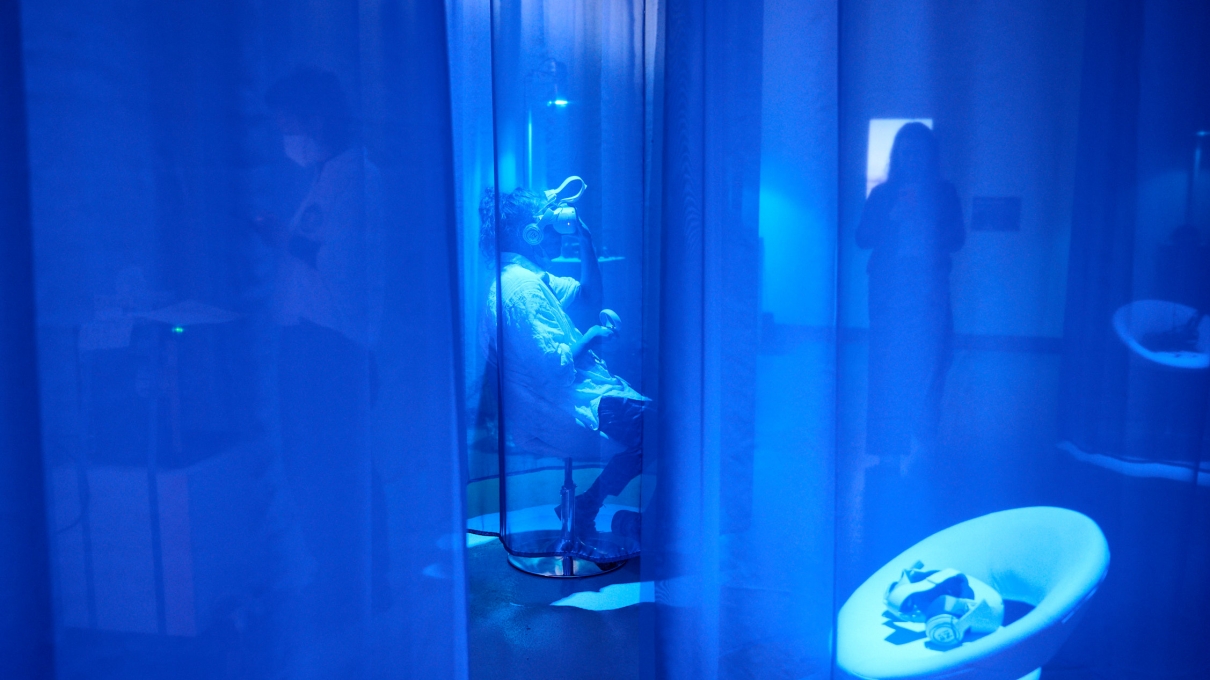The artwork Venice, Twilight by Alexander Reben explores the collaboration between humans and AI in contemporary art making. Alexander Reben’s artworks in the field of AI technology set new standards in the investigation of collaboration between man and machine. The digitally generated series shows a series of paintings created by an AI (= Artificial Intelligence) and in turn based on the description of the painting created by another AI.
From a selection of these series, the curator chose one painting, which was then painted by a local artist and is featured in the exhibition. Vines studied robotics at world-renowned MIT and his work explores the inherently human nature of the artificial. His artistic practice explores the potential of artificial intelligence as a creative partner and the ways in which it can challenge traditional notions of creativity and art.
Presendet by Gazelli Art House London
We met Alexander for an interview just before ULTRAMARIN open its doors in Venice and talked about his Art, whats special about Venice and how he sees the current developments in the field of digital art.
VRHAM!: In Venice you’re showing your work Venice, Twilight (2022) – what’s the idea behind it?
ALEXANDER REBEN: The painting presented in Venice is prompted by the ideas of water, the color ultramarine and Venice itself. Because of how my system of artwork generation works, the artwork can both be prompted and curated around particular topics and themes. Venice is a city literally built on technology, AI art makes for a natural pairing with the environment.
Which current developments in the field of digital art are you observing at the moment, what techniques are you already using, which innovations would you like to use (more) of, and how do technical developments influence your work?
Digital and generative art tools are being developed at a quick pace, especially those using AI. As these tools become ever more advanced, their ability to help with creative expression will also grow. I foresee a future where we “collaborate” with these tools to create art and other creative outputs. In my work, I am constantly looking out for any new technical developments as part of my conceptual practice which includes investigating these technologies through the use of experimentation and a lens of absurdity.

